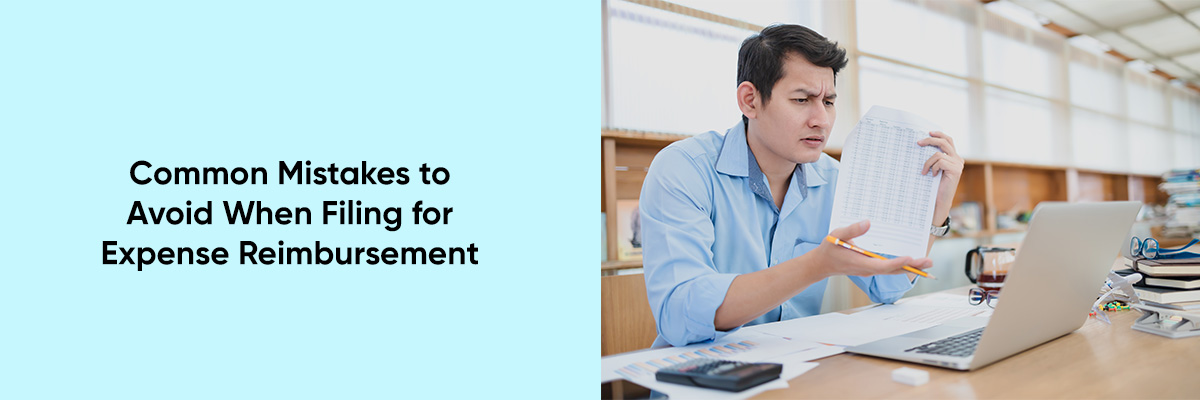In any organization, employees incur various expenses that are directly linked to the business operations. These expenditures play a crucial role in ensuring the optimal functioning, growth, sales, profitability, and exploration of new opportunities for the business. Such expenses are pivotal as they facilitate several key aspects: attracting new clients, enhancing the skills and knowledge of existing employees, ensuring seamless office operations, and facilitating the recruitment of suitable candidates for the company.
Often, these expenses are borne by employees themselves. However, since these expenditures are not personal in nature and are directly or indirectly related to the organization where they work, employees have the right to seek reimbursement. In this blog, we delve into the common types of expenses incurred by employees that entitle them to reimbursement. Additionally, we highlight some prevalent mistakes that individuals should avoid when filing for expense reimbursement.



What is Expense reimbursement?
It is when employees pay for business-related expenses out of their own pockets and then submit receipts or expense reports to be reimbursed by their employer. In this they tell everything in detail along with expense receipt as a proof of expense
Here are some common expense categories employees might encounter:
- Travel Expenses: This includes a variety of costs associated with work-related travel. Transportation expenses cover airfare, train tickets, car rentals, and mileage reimbursement if you’re using your personal vehicle. Accommodation expenses include hotel stays. Meals during travel can be claimed, often within daily limits set by your company. Don’t forget about miscellaneous costs like parking fees, tolls, and taxi fares.
- Office Supplies and Equipment: These are the items you need to perform your job effectively. This category covers basics like pens, paper, and notebooks, as well as printer ink. It also includes larger items such as computers, monitors, software, and any specific tools required for your job duties.
- Client Entertainment and Business Meals: When you take clients or business partners out for meals or attend events to foster business relationships, these expenses can be reimbursed. Ensure you note who was entertained and the business purpose of the meeting.
- Training and Education: This covers the costs of professional development. Fees for job-related courses, workshops, seminars, and the purchase of required training materials fall into this category. These expenses are typically pre-approved by your employer to ensure they align with your job role.
- Communication Expenses: If you need to make work-related phone calls on your personal phone or incur additional internet costs due to remote work, these can be reimbursed. Make sure to keep detailed records of these expenses, noting that they are work-related.
- Uniforms and Work Clothes: If your job requires specific uniforms or work attire, the cost of purchasing these can be reimbursed. This also includes any necessary protective gear. Keep receipts and note the job requirement for these items.
- Relocation Expenses: When you’re required to relocate for your job, many associated costs can be reimbursed. This includes fees for moving companies, temporary housing expenses, travel costs for house hunting trips, and storage fees for your personal belongings during the move. Ensure you have documentation for these expenses and understand your company’s relocation policy.
Avoid These Common Mistakes When Filing for Expense Reimbursement
1. Keep Those Receipts
Don’t throw away receipts! Use an envelope, folder, or a digital app to organize them. Receipts are crucial proof of your expenses. Without them, it’s challenging to verify and approve your expense claims. Always make sure you keep them in a safe place until your reimbursement is processed.
2. Meet the Deadline
Find out your company’s deadline for submitting expense reports and try to file them as soon as possible after incurring the expense. This helps avoid any last-minute scrambling. Meeting deadlines ensures timely reimbursement and avoids the stress of last-minute submissions.
3. Accuracy is Key
Double-check your report before submitting. Make sure all necessary information is included, such as dates, amounts, and clear descriptions of each expense. Accurate reports prevent processing delays and reduce the chance of needing to make corrections later.
4. Know Your Policy
Familiarize yourself with your company’s expense reimbursement policy. This includes what types of expenses are covered and any spending limits. Adhering to the policy ensures your expenses are approved without issues and helps you avoid submitting ineligible expenses, which can be rejected.
5. Provide Details
Don’t just say “dinner.” Be specific! For example, “Dinner with client [name] to discuss project [name].” Detailed descriptions help reviewers understand the context and justification for each expense, ensuring there is no ambiguity about the expense purpose.
6. Separate Business from Personal
Only submit expenses directly related to your work. Keep personal expenses separate to avoid any confusion. Keeping personal expenses separate prevents mix-ups and potential rejections of your claims, reflecting well on your professionalism and honesty.
7. Track Your Mileage
Use a reliable method like a GPS app or odometer readings to track your mileage for work trips. Remember to note the purpose of each trip. Proper tracking ensures you are reimbursed correctly for the distance traveled for work purposes.
8. Pre-Approval for Big Spends
If you anticipate a large expense, check if your company requires pre-approval first. This can prevent any issues later. Getting approval beforehand ensures there are no problems with reimbursement and allows you to discuss large expenses with your manager or finance department before incurring them.
9. Don’t Skip Small Expenses
Every bit counts! Keep track of all work-related expenses, regardless of amount, and include them in your report. By not skipping small expenses, you ensure you are fully compensated for all work-related costs.
10. Attach Documentation
Don’t forget to attach receipts and any required documents to your expense report. Some companies might need additional proof, like meeting agendas for business meals. Providing all necessary documents helps process your reimbursement smoothly and quickly.
Conclusion
Managing and filing for expense reimbursement is an integral part of ensuring a smooth and efficient workflow within any organization. By understanding the common types of expenses eligible for reimbursement and avoiding the prevalent mistakes outlined in this blog, employees can streamline the reimbursement process, ultimately benefiting both themselves and the company.
Remember, meticulous record-keeping, adherence to company policies, and clear communication are the pillars of successful expense reimbursement. By keeping these principles in mind, employees can navigate the reimbursement process with confidence and professionalism, ensuring they make no mistakes and receive timely payment for every expense they incur.


